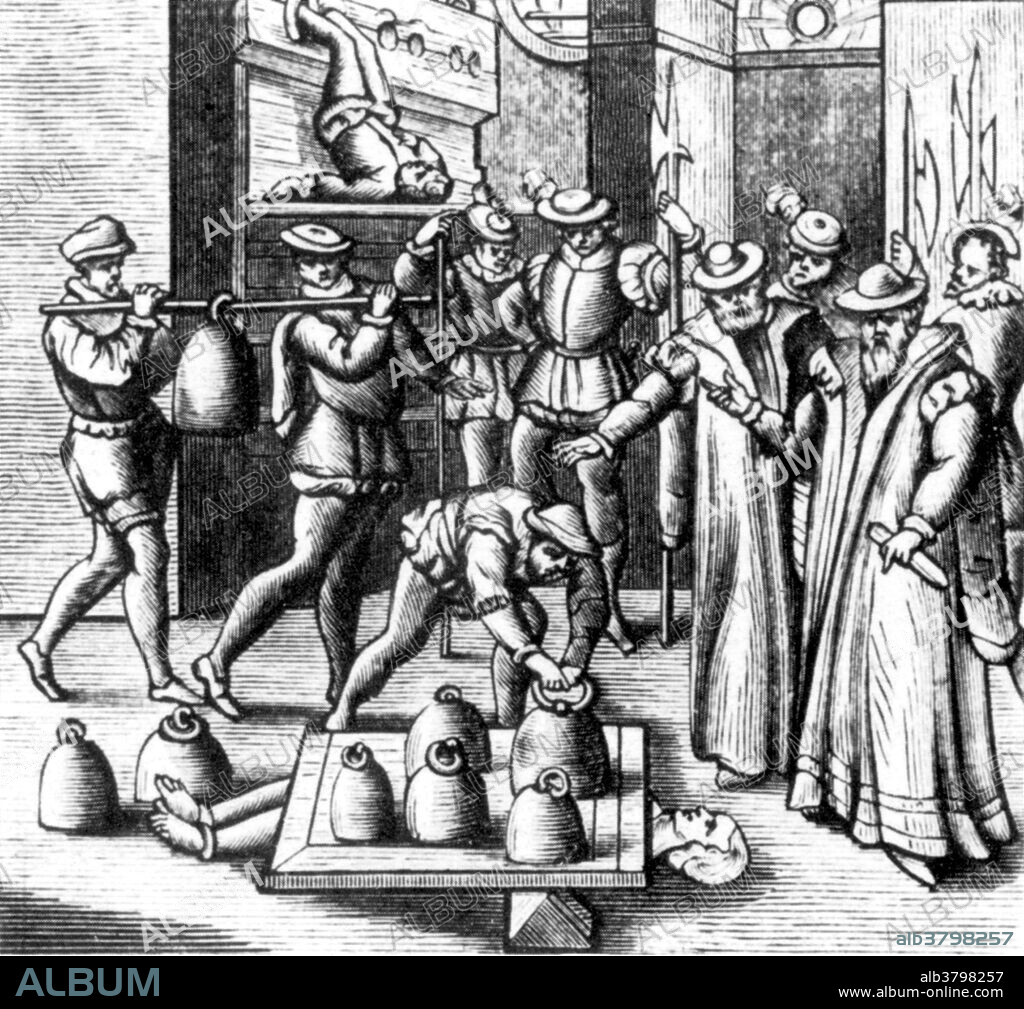alb3798257
Peine forte et dure, Legal Torture, 16th Century

|
Añadir a otro lightbox |
|
Añadir a otro lightbox |



¿Ya tienes cuenta? Iniciar sesión
¿No tienes cuenta? Regístrate
Compra esta imagen

Título:
Peine forte et dure, Legal Torture, 16th Century
Descripción:
Ver traducción automática
Peine forte et dure (hard and forceful punishment) was a method of torture formerly used in the common law legal system, in which a defendant who refused to plead would be subjected to having heavier and heavier stones placed upon his or her chest until a plea was entered, or the defendant died. Many defendants charged with capital offenses would refuse to plead in order to avoid forfeiture of property. If the defendant pleaded either guilty or not guilty and was executed, their heirs would inherit nothing. If they refused to plead their heirs would inherit their estate, even if they died in the process. The procedure was recorded by a 15th century witness: "He will lie upon his back, with his head covered and his feet, and one arm will be drawn to one quarter of the house with a cord, and the other arm to another quarter, and in the same manner it will be done with his legs; and let there be laid upon his body iron and stone, as much as he can bear, or more..." Peine forte et dure was abolished in Great Britain in 1772, with the last known actual use of the practice having been in 1741. Torture is the act of deliberately inflicting physical or psychological pain in order to fulfill some desire of the torturer or compel some action from the victim. Woodcut from unknown source, 1500s.
Crédito:
Album / NYPL/Science Source
Autorizaciones:
Modelo: No - Propiedad: No
¿Preguntas relacionadas con los derechos?
¿Preguntas relacionadas con los derechos?
Tamaño imagen:
3900 x 3640 px | 40.6 MB
Tamaño impresión:
33.0 x 30.8 cm | 13.0 x 12.1 in (300 dpi)
Palabras clave:
ARTE • BLANCO Y NEGRO • CASTIGAR • CASTIGO • CRUEL • CRUELDAD • DIBUJO • GRABADO EN MADERA • HISTORIA • HISTORICO • ILUSTRACION • INSTRUMENTO TORTURA • METODO TORTURA • OBRA DE ARTE • ORDENAMIENTO JURÍDICO • PERSECUCION • PLANCHA DE MADERA • SIGLO XVI • TORTURADOR • VICTIMA • XILOGRAFIA
 Pinterest
Pinterest Twitter
Twitter Facebook
Facebook Copiar enlace
Copiar enlace Email
Email
